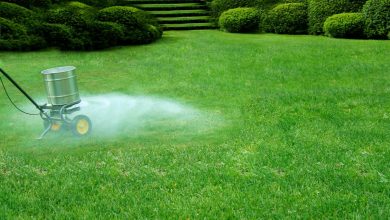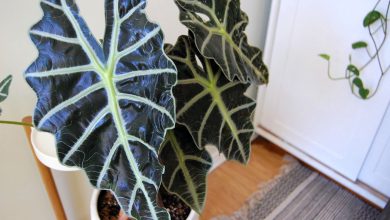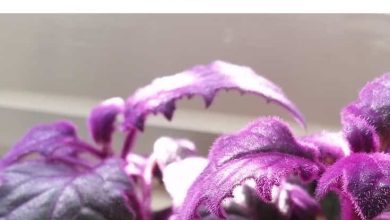Rhipsalis, hanging cactus family care
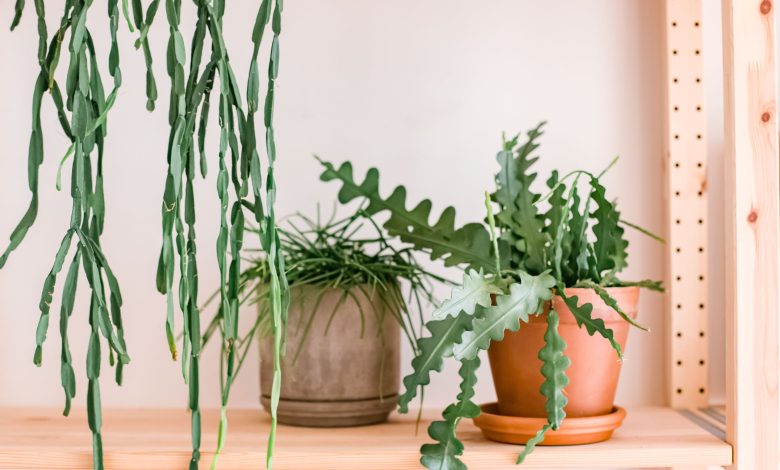
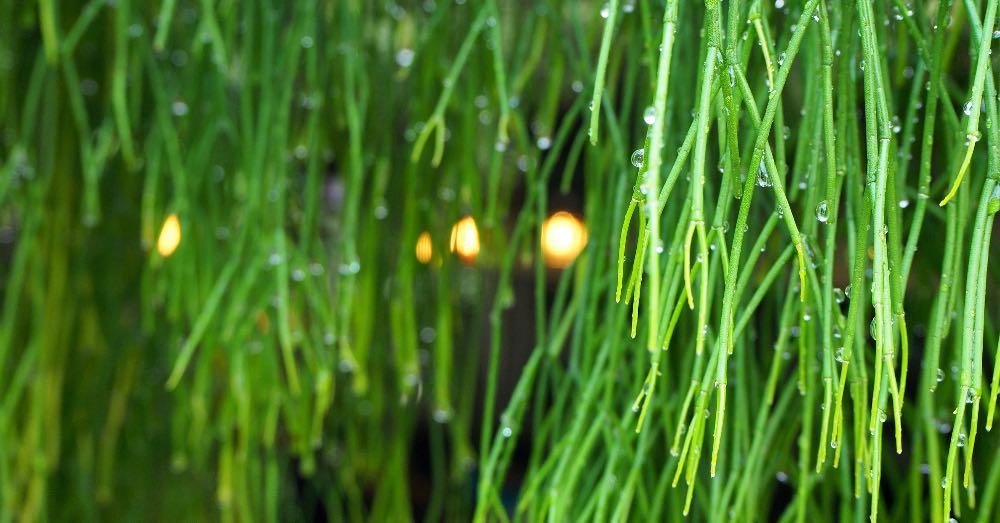
Do not get carried away by prejudices: as much as you know the care of cacti, discovering the care of Rhipsalis means bringing us an important surprise. And it is that, due to their origins, these unique succulents that are included in the cactus family have substantially different needs than their cousins with thorns. Something that should be known in order to be able to grow them successfully but, above all, to fully enjoy their unique beauty.
Let’s start by knowing why they are so different from what we know about cacti, even though they are part of them. In the wild, the more than 35 species of Rhipsalis grow in tropical and subtropical climates in central and southern America, Africa, and some Indian Ocean islands. A geographical and wild distribution that gives us an important clue about their moisture needs. But, in addition to this, there is another important detail that marks this plant family. Since they have not had to protect themselves from predators, most Rhipsalis lack spines.hard and sharp. On the few occasions that they present them, and except for some such as Rhipsalis pilocarpa, they do so in the early stages of the plant and are always slightly sharp. One reason why it is common to think that they do not share a relationship with cacti.
Because of their uniqueness but, above all, because of the diversity of forms and aspects they present; It is convenient to know the care of the Rhipsalis. And it is that, if we ask ourselves how to decorate the house with plants, there is no doubt: any of these cacti is the perfect candidate to give an environment a highly original natural touch.
5 RHIPSALIS CARE YOU SHOULD KNOW
Before knowing the care of the Rhipsalis in depth, it is convenient to know a couple of things. To begin with, despite the multiple species that are included under this botanical name, the vast majority of them have the same needs. An extremely interesting point if we want to make a collection of them, and enjoy different species. But be careful not to trust yourself: we have already mentioned that they are naturally distributed in highly disparate climates on our planet. For this reason, and before treating everyone equally, it is advisable to find out if the Rhipsalis we have has any special needs.
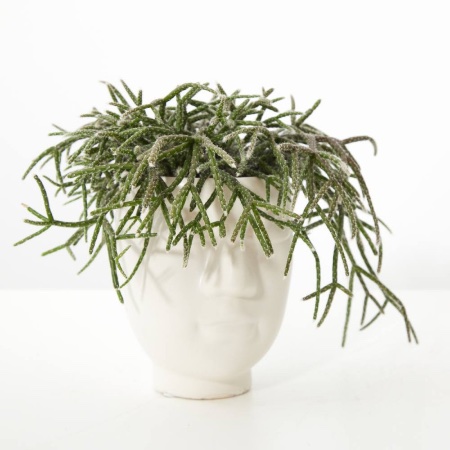
In addition to this, it is essential to know that in nature these cacti are epiphytes. A detail that does not affect its cultivation, but that does allow us to know more about this familiar vegetable that usually grows on the branches of trees. Perhaps for this reason, the Rhipsalis are characterized by having long stems, usually thin and very fleshy. They can be cylindrical, round or even flat depending on the variety. And another peculiarity: its growth is disorderly, giving rise to a bushy appearance and with a very attractive wild point.
Let’s take a closer look at their needs, starting from another aspect that makes them even more attractive. Whether we are new to caring for plants or looking for easy to care for indoor hanging plants, the Rhipsalis is perfect. The reason? It is an undemanding plant considered rustic that, although it is not ideal, can survive if we forget about it. And it has another couple of pluses to finish captivating you: a good part of the Rhipsalis blooms and, in addition, it is not toxic for pets. You can not ask for more!
1. Light, abundant and always indirect
Due to the natural conditions in which they grow, these unusual cacti can even be considered shade plants. And it is surprising to know that, despite being a cactus, its demand for light is substantially different. They need lighting but it is essential that it is always indirect and even filtered through a curtain. Ideal conditions both for them to grow and for them to flourish.
If exposed to direct sun, their leaves will burn turning brown.
In addition to this, it is essential to keep them away from drafts.
2. The planting soil, key to its health
As we will see below, their hydration needs are different from those of cacti, but they share a characteristic with them: their roots do not tolerate waterlogging.
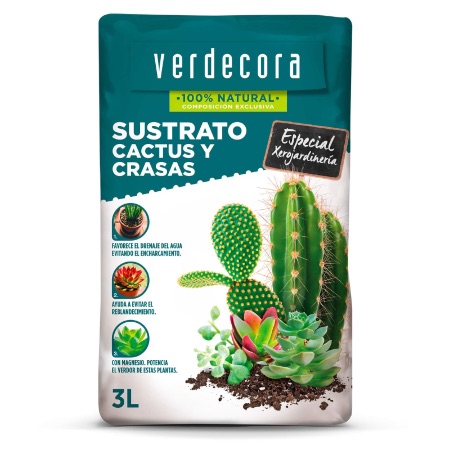
For this reason and to avoid unpleasantness, it is essential that we use a specific substrate for cacti and succulents; and, in addition, it does not hurt to know in depth what perlite is for plants and incorporate it into the mix. It will favor maintaining that humidity in the substrate that we need and will also help to drain.
3. The location, one of the Rhipsalis care that we will adapt to each season and variety
And the reason is simple: although within the Rhipsalis family there are some species with greater tolerance to cold, in general it does not suit them particularly well. What’s more: the vast majority and if they are subjected to frost or temperatures below one degree below zero, it is highly likely that they will die.
For this reason, and despite the fact that being outside feels great in spring and summer, with the drop in temperature it will be essential to shelter them from winter. Something that we must take into account depending on how our climate is and, if we live in a cold area, consider having them in pots to be able to put them inside the house.
4. Irrigation and environmental humidity, two essential for Rhipsalis
It is one of the most surprising Rhipsalis cares if we take into account that it is a cactus. In spite of this, its irrigation schedule must be regular in the spring and summer months. A time that coincides with its growth. And how should we water it in autumn and winter? Well, almost anecdotally in the first, and completely suspending hydration in cold months.
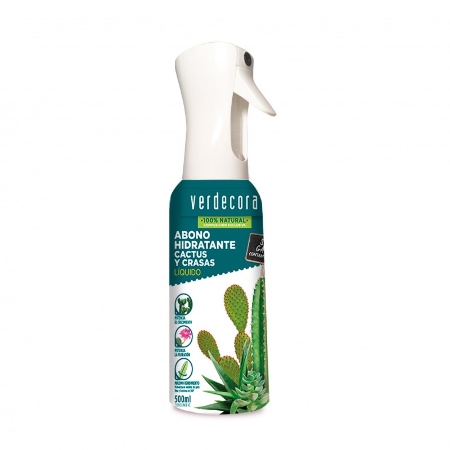
And how much should we water? Well, moderately, preferably with water without lime and when we see that the substrate has begun to dry, always guiding us through its lower layers. And, although it is not on the list of drought resistant plants, it does admit to getting a little thirsty. That yes: if you have it and you are absent from home, try to give it a deep watering before leaving. It will be the guarantee of finding her safe and sound when you return.
As important as this is to provide it with good environmental humidity, especially in the summer months. If it is subjected to a very dry climate, it is likely to be attacked by pests as unappetizing as the cottony mealybug, the aphid or the red spider. Some insects that, if they comply with the care of the Rhipsalis, will not notice it since it is a plant that is highly resistant to pests.
5. Fertilizer, essential in times of growth
It is the last of your care but, not for that, the least important. Coinciding with its stage of development, it is important to renew the nutrients of our plant on a monthly basis. An essential help for it to grow and flourish.
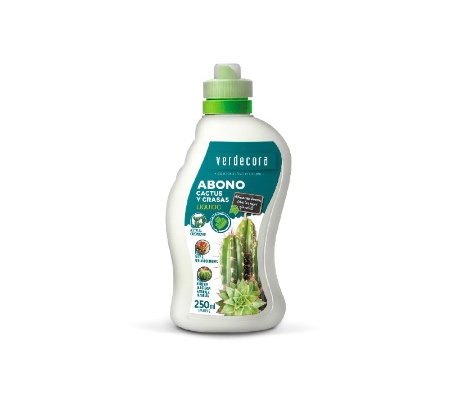
For this, it is essential to use a liquid fertilizer for cacti and succulents, characterized by being low in nitrogen; and always apply it in the irrigation water.
And ready! Your Rhipsalis does not need more to unfold that unique green charm that, without being spectacular, leaves no one indifferent.


